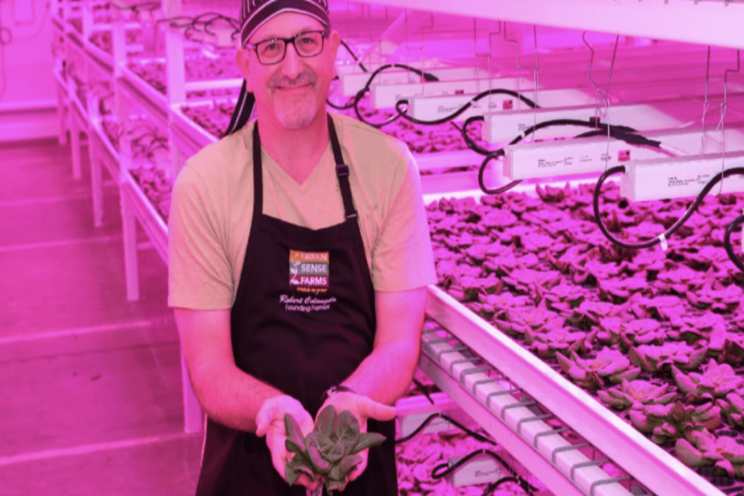Investing in indoor vertical farming
Added on 24 May 2021

Here are a few pointers to consider when exploring investment candidates.
Business Model
A good business model is a start to creating a profitable vertical farm. The model should include: where the farm will be located, who is the anchor customer, what crop will be grown and what volume, how produce will be packaged, how it will be distributed, and how it will be sold. In addition, it should speak to the type of farm that will be built- a turnkey operation "seed to supermarket" vs. a grow farm, that contracts germination, packing and sales. Startups always take longer than expected to get up and running, make sure there is a grace period built into the plan for initial operations and distribution challenges.
Management Team
After you have developed the winning business model, you need a qualified team to execute the business plan. Now that vertical farming has been around for several years, it's easier to find qualified people with experience operating these types of farms. The C Suite should consist of professionals experienced in business administration and a technical team with horticultural production experience. This includes a senior grower, production manager, food safety manager, chief ag engineer, and sales manager. Depending on the farm; for example, a highly automated farm could look to related industries to find an operations manager with experience in a mechanized food production facility.
Marketing and Sales
The produce market is very competitive and is referred to as "a pennies business" with tight margins and profit being made on large volume. Shrink can minimize the profitability of a vertical farm. The worst thing for any operator is throwing away crop and shrink can happen at each point of the growing chain (seeding, germination, nursery, growth, harvesting, packing, and shipping). In addition, produce is perishables having a short shelf life of 1-3 weeks. The best way to reduce shrink is to grow high-quality produce that is pre-sold. This will also yield the highest price. Having an experienced sales team with relationships with a wide variety of produce buyers is paramount to success. A well-thought-out marketing and a branding plan are also required to position your crop for the target buyer and detail how to make your brand known, such as in store samples / tastings, sponsorships, chef partnerships, merchandising…
Technology
What technology will be used in the growing operation? Will the farm be designed and built by the management team, or will they contract an experienced farm design and builder? Will they use a proven hydroponic, aeroponic, or aquaponics growing system or deploy a disruptive new technology A well-designed farm will include a seeding area, a germ room, a nursery, a growing area, a packing area, and a cooler. It will require the Temperature (T), Relative Humidity (RH), and air circulation to be monitored and controlled at each operation. At a minimum, it will require specialized equipment to control the climate, irrigation, treat nutrient water, enrich the grow room with CO2 and control LED lights. In addition, the farm should have adequate sensors, a central data collection system with automated vales, so the delivery of all inputs can be precisely controlled. A disruptive technology can be transformative when scaling the business, increasing yields, generating profit and optimizing productivity.
Capital is the grease that lubricates the wheels of innovation. Investors continue to explore opportunities in the vertical farming market helping the industry grow.
Investors be(a)aware, there is a lot of hype in this market and much nuance in operating a successful vertical farm that does not show up in financial projections or a business plan. A good business model, a seasoned management team, and a proven growing technology, can all add up to make a vertical farm profitable.
Photo Caption: Robert Colangelo is the founder of Green Sense Farms Holdings, Inc. (GSF. He is an early adopter in Controlled Environment Agriculture (CEA) and has over ten years of experience with the design-build, operations and raising capital for vertical farms.
GSF provides contract research, consulting, and farm design and build services.
Source and Photo Courtesy of Urban Ag News
Source: Urban Ag News
More news















